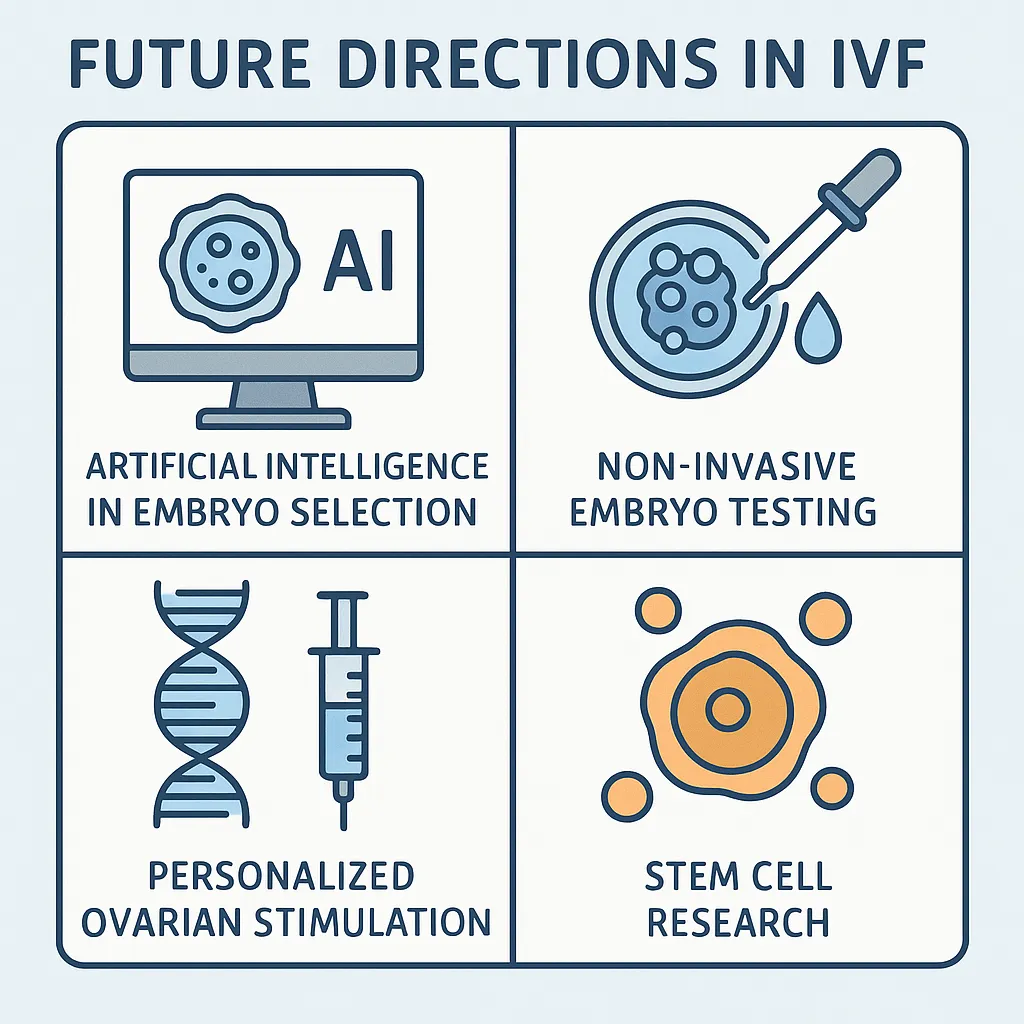
What’s Next in IVF — Future Trends and Cutting-Edge Innovations
As IVF enters its fifth decade, science continues to push boundaries. New technologies are making fertility treatment more personalized, more precise, and in some cases, more affordable. In this final section, we explore the most promising innovations reshaping IVF — and what they may mean for patients in the next 5–10 years.
🔹 1. Artificial Intelligence (AI) in Embryo Selection
How it works:
AI-powered platforms analyze time-lapse images of developing embryos to predict implantation potential — sometimes more accurately than the human eye.
Benefits:
Reduces subjectivity in grading
May improve selection of embryos for eSET
Speeds up lab workflow and consistency
Platforms to watch:
Life Whisperer™, iDA Score™, CHLOE EQ™
Status:
Used in some U.S. and international clinics; more studies underway.
🔹 2. Non-Invasive Embryo Testing (niPGT-A)
What it is:
Instead of biopsying cells from the embryo, niPGT-A analyzes DNA shed into the surrounding culture medium during blastocyst development.
Potential Advantages:
No damage to embryo
Easier lab technique
Reduces risk of false results due to mosaicism
Limitations:
Still experimental
Less DNA available; accuracy varies
🔹 3. Personalized Ovarian Stimulation (Pharmacogenomics)
Concept:
Using your genetic profile to determine the best stimulation drugs and doses.
Benefits:
Reduces trial-and-error cycles
May improve response in poor or hyper-responders
Avoids overmedication
Example:
Some clinics now offer AMH + FSHR gene testing before IVF protocols.
🔹 4. Stem Cell Research and Ovarian Rejuvenation
Emerging ideas:
Using stem cells or platelet-rich plasma (PRP) injections into the ovaries to regenerate follicle growth.
Goal: Help women with diminished ovarian reserve, early menopause, or chemo-related infertility.
Status:
Early clinical trials in Europe and Asia. Not standard of care in the U.S.
🔹 5. Uterine Environment Optimization
New efforts are being made to:
Profile the endometrial microbiome (healthy vs. inflammatory bacteria)
Time transfers using endometrial receptivity assays (ERA)
Reduce immune rejection via targeted therapies
These aim to increase the chance of implantation — especially in recurrent failure cases.
🔹 6. IVF Lab Automation and Mini-IVF Clinics
Some labs are automating embryo culture and analysis using:
Automated incubators
Robotic ICSI injectors
Remote monitoring
At the same time, smaller clinics offering affordable Mini-IVF or IVF-in-a-box kits are becoming available — especially for underserved or rural patients.
✅ Looking Ahead: IVF is Becoming Smarter, Gentler, and More Personalized
Innovation Goal AI embryo selection More precise embryo choice Non-invasive PGT-A Safer embryo testing Genetic profiling Better drug selection PRP and stem cells Ovarian rejuvenation Lab automation Consistency and access
These tools promise to enhance outcomes, reduce side effects, and personalize care, especially for patients who have struggled with traditional IVF.